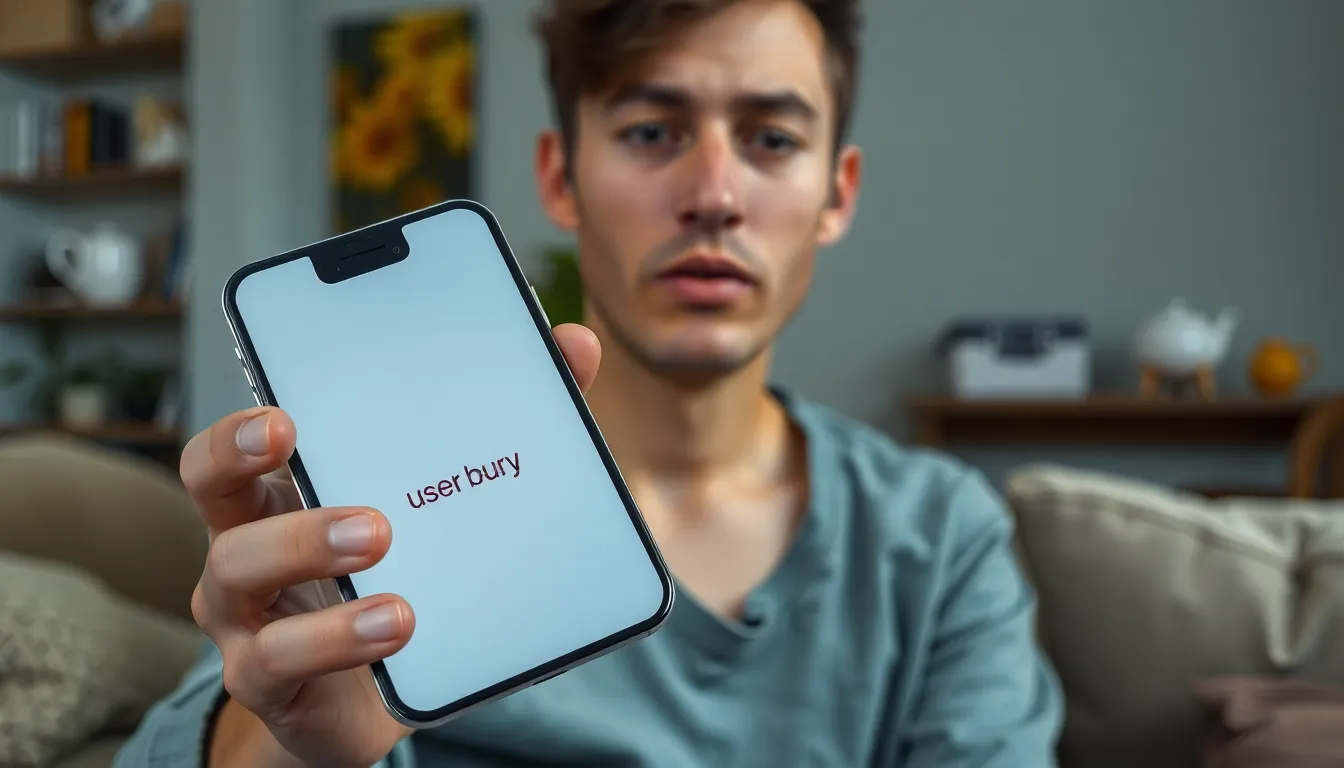Table of Contents
ToggleEver dialed a number only to be greeted with the dreaded “user busy” message on your iPhone? It’s like getting a polite brush-off from a friend at a party—awkward and a little frustrating. But what does it really mean when your call doesn’t go through?
In the world of digital communication, this message can signal a variety of scenarios. Maybe the person’s on another call, or perhaps they’ve chosen to ignore your charming voice. Whatever the case, understanding this little quirk can save you from unnecessary worry and help you strategize your next move. So, let’s dive into the mystery of the “user busy” message and uncover what’s really going on when your call gets the cold shoulder.
Understanding User Busy Messages
Encountering a “user busy” message signifies that the recipient’s line is occupied. This situation often occurs when someone is engaged in another call, which leaves them unable to answer at that moment. Sometimes, the person may also be using features like browsing the internet or texting, which can block incoming calls.
Recognizing this message helps in managing expectations. It doesn’t indicate that the recipient is deliberately ignoring calls. Instead, it suggests a temporary situation likely caused by competing priorities on their device.
The carrier’s network can also contribute to this phenomenon. Certain networks display user busy messages for various reasons, including system limitations and call traffic issues. Users should consider the possibility of network congestion during peak times affecting call availability.
If attempts to reach someone consistently result in a user busy message, it may signal a potential issue. This could include the individual having their phone set to Do Not Disturb mode or experiencing signal problems. Confirming this may involve contacting the person through other communication methods.
In most cases, patience remains essential. Allowing some time before attempting another call increases the likelihood of successful connection. Ultimately, understanding the layers behind this message helps maintain smooth communication.
Common Reasons for User Busy on iPhone

Understanding the reasons behind the “user busy” message helps clarify communication issues on an iPhone. Several factors contribute to this situation.
Call Is Already In Progress
A common reason for the “user busy” message occurs when the recipient is already on a call. Engaging in an active conversation prevents incoming connections. When someone is using their device for a call, the system automatically blocks other calls, leading to this status alert. This feature ensures that ongoing conversations remain uninterrupted. Waiting for the recipient to finish their current call often leads to a successful connection.
User Is Engaged with Another Call
Another scenario involves the recipient being engaged with another call. Multiple call scenarios can arise with conference calls or three-way calling enabled. This capacity allows one person to handle more than one conversation simultaneously. As a result, the caller receives the “user busy” message. Frequent engagement with multiple callers could indicate a busy schedule or priority needs that prevent the person from taking new calls.
Do Not Disturb Mode
Activating Do Not Disturb mode results in the “user busy” notification as well. This setting silences incoming calls to reduce distractions. When this mode is enabled, the system doesn’t allow calls to come through, displaying the busy message. Users often enable it during meetings or while focusing on tasks. Knowing this, patience is vital when attempting to reach someone who may require uninterrupted time.
Troubleshooting User Busy Notifications
Encountering a “user busy” notification prompts some straightforward troubleshooting steps. Addressing these can lead to successful connections.
Restarting Your iPhone
Restarting an iPhone can resolve temporary issues causing the “user busy” notification. This simple action refreshes network settings and may correct glitches affecting call functions. To restart, press and hold the side button and either volume button until the slider appears. Then drag the slider to turn off the device. After waiting a few seconds, pressing the side button again powers it back on. Many users find a quick restart helps eliminate persistent call problems.
Checking Call Settings
Checking call settings ensures everything functions correctly. Navigate to Settings, then Phone to review relevant features. Users should confirm that Call Waiting is activated. This feature allows incoming calls even when they’re already on a call. Additionally, examine Do Not Disturb settings. If activated, this feature silences all incoming calls, triggering the “user busy” notification. Disabling this option can restore the ability to receive calls. Checking these settings contributes to resolving frequent interruptions in communication.
Alternatives to Calling
Reaching out can happen in various ways beyond simply making a call. Text messaging serves as a quick and effective alternative. Using apps like iMessage allows for instant communication, especially when responses can be shorter.
Email provides another viable option, particularly for longer messages or detailed information. Many individuals prefer email for professional communication as it helps document conversations.
Social media platforms such as Facebook Messenger or WhatsApp offer real-time interaction through messaging. Sending a direct message can often yield a quicker response compared to traditional calls.
Video calling presents an engaging alternative, especially if seeing the recipient is important. Applications like FaceTime or Zoom enable face-to-face communication, enhancing connection even from a distance.
When immediate contact isn’t critical, leaving a voicemail ensures the recipient knows there was an attempt to reach them. Voicemessages can share essential information and allow the recipient to respond at their convenience.
For those in need of urgent communication, using a shared task management app can keep teams coordinated. Notifications within these apps may prompt replies faster than phone calls.
Choosing which method to use depends on the urgency and nature of the conversation. Prioritizing the preferred communication channel can enhance interaction while respecting personal boundaries. Considering these alternatives makes reaching out more versatile.
Encountering the “user busy” message on an iPhone can be frustrating but it’s important to remember that it’s often a temporary situation. Whether the recipient is on another call or using their device for other tasks, this notification simply indicates their line is occupied.
By understanding the reasons behind this message and employing the troubleshooting tips provided, users can navigate these moments with ease. Exploring alternative communication methods can also help maintain connections without unnecessary stress. Ultimately, patience and flexibility in communication can lead to more effective interactions.





